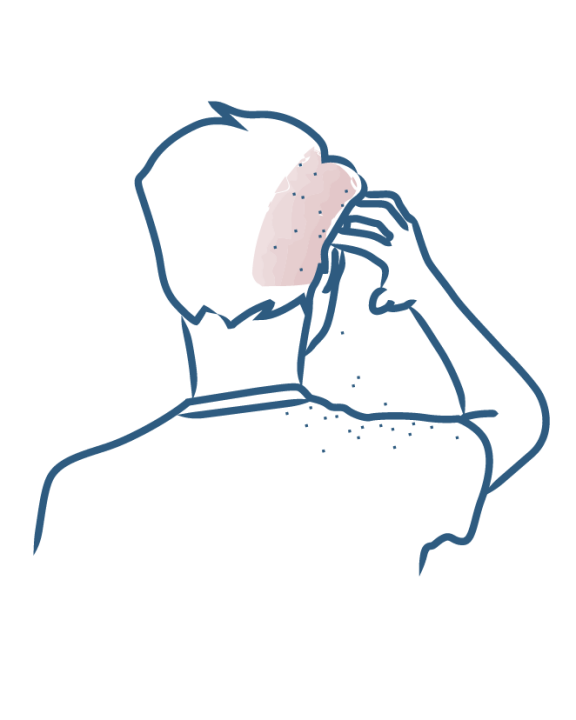
What is dandruff?
Dandruff affects approximately one in two people(1). Although it is totally harmless, it is unattractive and stigmatizing. It can sometimes give a false impression of negligence and affect people’s relationships with others. It is treated mainly using treatment shampoo, which can get rid of it. Unfortunately there is no cure for dandruff, which is why it can return at any time under the influence of various factors.
Clusters of cells
So what is dandruff? Dandruff is in fact small fragments of scalp, also called scales. The scalp’s surface is made up of "epidermal" cells, and these scales are clusters of cells that have come away from the scalp to end up in the hair and on clothing.
Dandruff can have multiple causes. Three factors have been identified: a scalp sensitivity; impaired sebum secretion; and a proliferation of certain micro-organisms such as yeasts of the genus Malassezia. In addition to these causes, numerous external factors can also cause dandruff, including use of unsuitable products, an unhealthy lifestyle, stress, etc.
Dandruff can develop on any surface covered with hair. Most dandruff is in the hair on the head, but it can also occur in the eyebrows and beards. Dandruff that has reached the body and skin is called scales.
Accelerated cell renewal
The exact cause of dandruff is still debated, but the process involved is well understood. It is caused by an acceleration in the renewal of the scalp's epidermal cells.
A healthy scalp produces dead cells daily, the equivalent of about 4 kg each year, without anyone noticing. The cell cycle, during which cells mature, break free and are then eliminated at the surface as they are dying, lasts between 21 and 28 days. In the case of dandruff, cell renewal is accelerated. Instead of taking 21 to 28 days, it takes 5 to 14 days(1). The cells no longer have enough time to be eliminated gradually at the surface. Clusters of dead cells then become visible and clump together. This is what we call dandruff.
(1) Byung In Ro and Thomas L. Dawsonw, The Role of Sebaceous Gland Activity and Scalp Microfloral Metabolism in the Etiology of Seborrheic Dermatitis and Dandruff. Department of Dermatology, College of Medicine, Chung Ang University, Seoul, Korea.
Different types of dandruff
Oily dandruff is caused by increased sebum production on the scalp. This results in a proliferation of Malassezia yeasts, which use sebum as a source of food. Accelerated cell renewal then causes local inflammation, which can trigger itching. Oily dandruff is large in size, clumps together, sticks to the hair and can be itchy. It is found mostly at the root of the hair in the form of patches. Dry dandruff is caused by a dry scalp, which results in flaking and the formation of dandruff. Dry dandruff is the most common type of dandruff. It is small in size, dry, white and volatile, which is why it can be found on clothing and shoulders. It is also called Pityriasis simplex, in other words it is considered a simple dandruff condition. A very dry scalp can cause mild itching.
Treatment and management of dandruff will therefore differ according to the type of dandruff. Ask your pharmacist or doctor for advice, in order to find the most suitable treatment together.
Our care routines
Loose dandruff conditions, pso
Dermatological expertise
To better understand your skin and hair, discover our exclusive content and innovative care products designed to improve your quality of life..

